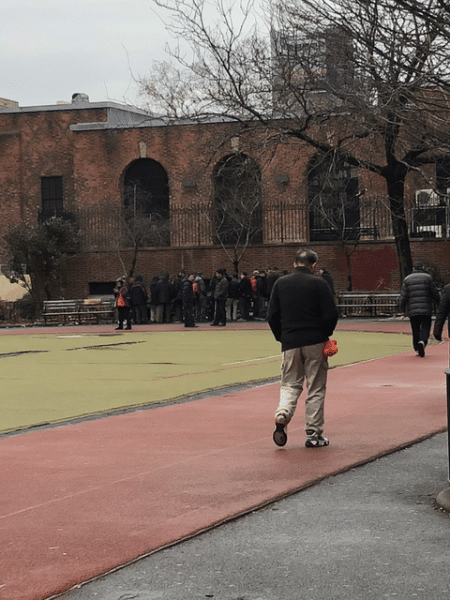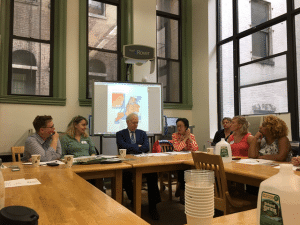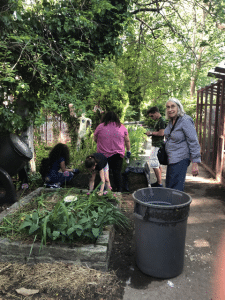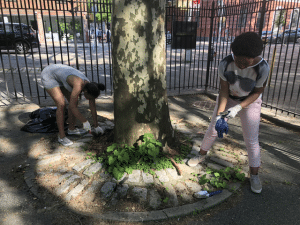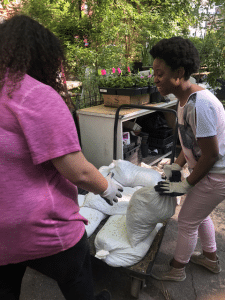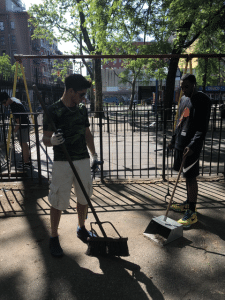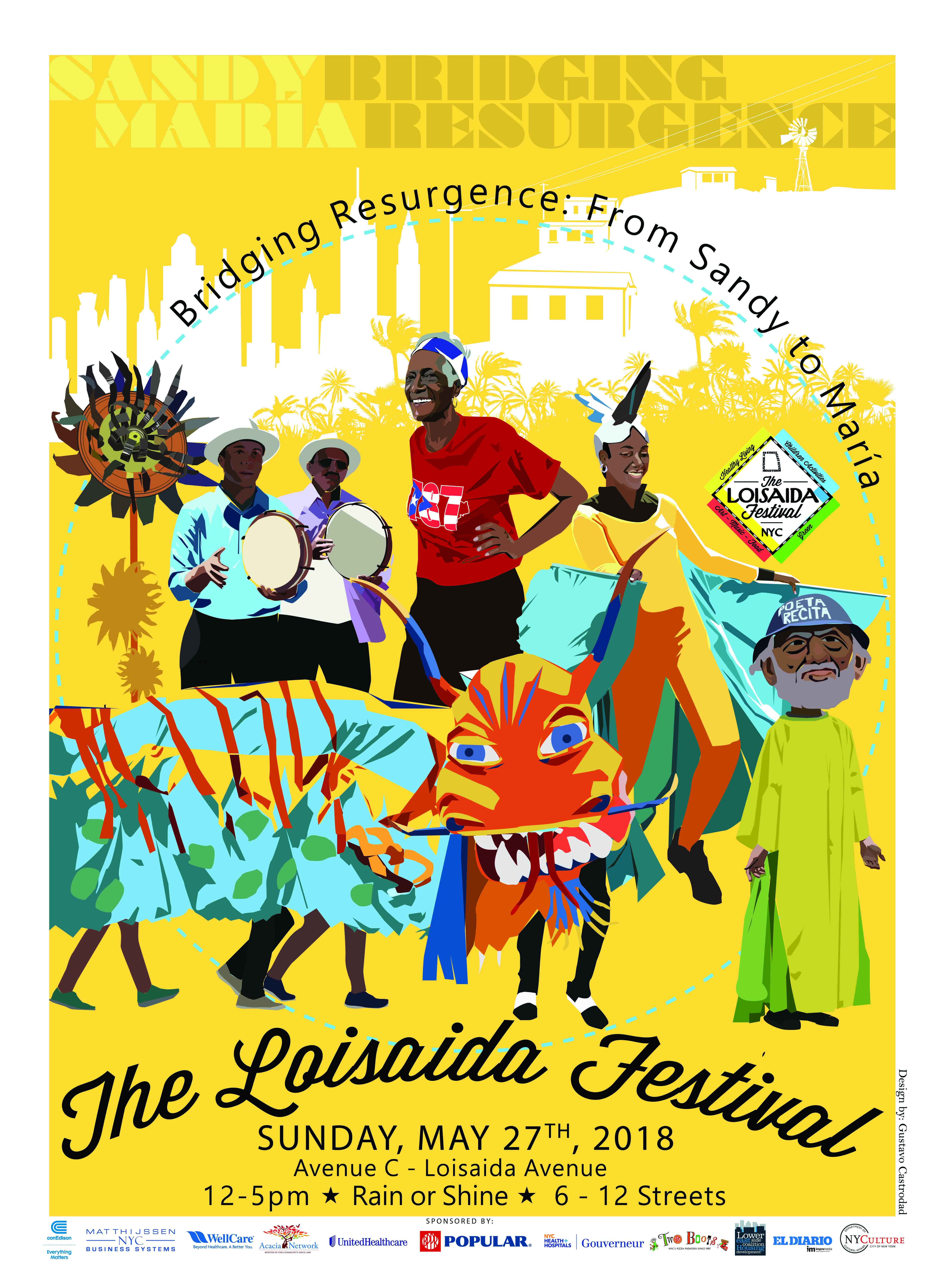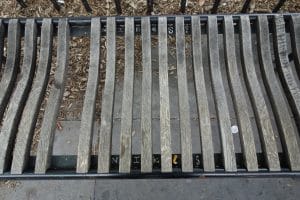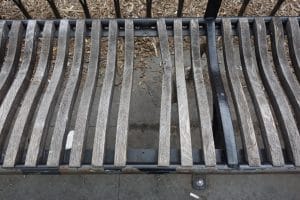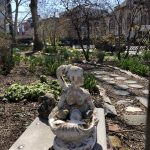
From the New Forsyth Conservancy:

For the past three years, Members of the Tenement Museum Staff have taken-on the role of garden steward for three portions of Sarah Delano Roosevelt Park (on the south side of Delancey between Forsyth and Christie). The seasons for this work have come around again and we’re reaching out to all aspiring Urban Gardeners to participate in this affirming and important community service.
In addition to improving our local green space, volunteering to participate in this group places you in the historic continuum of the Lower East Side garden movement. Our group, in fact has taken on the name of those pioneering gardeners. We are The New Forsyth Garden Conservancy.
We weed, we clear away debris, we lay down mulch, we plant bulbs, we meet people, we build pathways, and best of all, we learn more about the neighborhood through our discoveries. Part maintenance, part gardening, part landscaping, part archeology… all storytelling!
Weather permitting, we meet each Thursday at the park site between 5:30 and 6:00. Our kick off Spring 2018 meeting is Thursday May 24Th at 5:30.
For this first meeting, we’ll meet in the breakroom and schlep over to our plots together. If you are unable to join us this week, consider doing so any Thursday it’s not raining between now and October. All you need are some cloths you don’t mind getting dirty (long sleeves are a good idea, FYI). We have gloves, tools, and trash bags.
Everyone is welcome!
Best,
Jason Eisner, Manager for 97 Orchard
Lower East Side Tenement Museum 103 Orchard Street


